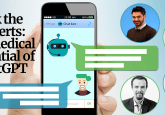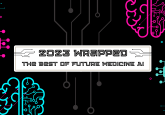Can Large Language Models Generate Novel Research Ideas?

Can AI generate groundbreaking research ideas? This question has intrigued scientists since large language models (LLM’s) entered the scene a few years back. With LLM’s like GPT-4 already handling tasks like writing code and drafting papers, the next step is testing their ability to create original ideas. A new study from Stanford University explores this possibility, suggesting that AI could rival human researchers in certain aspects of creative thinking.
A Rigorous Study Design
Led by Chenglei Si, Diyi Yang, and Tatsunori Hashimoto, the Stanford team gathered over 100 researchers to assess LLMs’ creative potential. They asked both human researchers and an LLM to generate research ideas on key topics in natural language processing, such as coding, multilinguality, and factuality.
Over 79 expert reviewers evaluated these ideas blindly, comparing their novelty, excitement, and feasibility.
In addition, the researchers introduced a hybrid scenario. This involved having human experts rerank AI-generated ideas to explore whether combining human judgment with AI could improve the overall quality.
Key Findings: AI Excels in Novelty, Humans in Feasibility
The study’s results revealed intriguing insights into AI’s capabilities in research idea generation:
-
- AI-generated ideas scored higher in novelty (5.64/10) compared to human ideas (4.84/10)
- The difference in novelty scores was statistically significant (p < 0.05)
- Human-generated ideas were judged more feasible than AI-generated ones
- Combining AI ideas with human reranking improved overall scores
These findings suggest that while AI can introduce fresh, innovative concepts, human expertise remains crucial for grounding ideas in practical reality.
Challenges and Limitations of AI in Research Idea Generation
Despite their strength in generating novel ideas, the study pointed out several challenges LLMs face.
One major limitation was the lack of diversity in the ideas produced. As the AI generated more ideas, it often repeated similar concepts, which may indicate a limitation in its creative range.
The study also found that LLMs struggled with self-evaluation. When asked to judge the quality of their own ideas, AI models were less reliable than human reviewers.
This reinforces the need for human oversight in the idea generation process, particularly for evaluating which concepts are worth pursuing.
Next Steps: From Ideas to Research
While generating ideas is a crucial first step, the study acknowledged that more work is needed to turn those ideas into actual research projects.
To address this, the Stanford team is launching a follow-up phase where both human and AI-generated ideas will be developed into full research projects. This will allow researchers to see whether AI’s novelty leads to meaningful research outcomes.
What This Means for AI in Research
The results suggest AI could play a growing role in generating new research ideas. However, LLMs may still need human involvement to refine and evaluate these ideas.
This hybrid approach—where AI generates ideas and humans enhance them—could prove to be a powerful model for future scientific discovery.
Moreover, the study raises important questions about the ethical implications of using AI in research.
As AI becomes more capable of generating novel ideas, it’s unclear how intellectual credit should be distributed. The study hints that new standards may be necessary to ensure AI-assisted research remains ethical and rigorous.
Interested in staying up-to-date with the latest developments in AI-assisted research? Subscribe to our newsletter for cutting-edge insights and discoveries in the world of AI and medical innovation.





